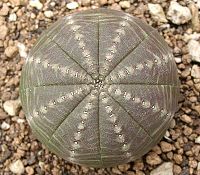
Photo from wikipedia
This opinion article proposes a novel alignment of traits in plant morphogenesis from a function-based evolutionary perspective. As a member species of the ecosystem on Earth, we human beings view… Click to show full abstract
This opinion article proposes a novel alignment of traits in plant morphogenesis from a function-based evolutionary perspective. As a member species of the ecosystem on Earth, we human beings view our neighbor organisms from our own sensing system. We tend to distinguish forms and structures (i.e., “morphological traits”) mainly through vision. Traditionally, a plant was considered to be consisted of three parts, i.e., the shoot, the leaves, and the root. Based on such a “structure-based perspective,” evolutionary analyses or comparisons across species were made on particular parts or their derived structures. So far no conceptual framework has been established to incorporate the morphological traits of all three land plant phyta, i.e., bryophyta, pteridophyta and spermatophyta, for evolutionary developmental analysis. Using the tenets of the recently proposed concept of sexual reproduction cycle, the major morphological traits of land plants can be aligned into five categories from a function-based evolutionary perspective. From this perspective, and the resulting alignment, a new conceptual framework emerges, called “Plant Morphogenesis 123.” This framework views a plant as a colony of integrated plant developmental units that are each produced via one life cycle. This view provided an alternative perspective for evolutionary developmental investigation in plants.
Journal Title: Frontiers in Plant Science
Year Published: 2017
Link to full text (if available)
Share on Social Media: Sign Up to like & get
recommendations!